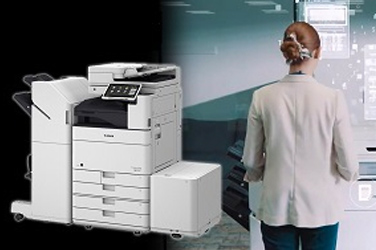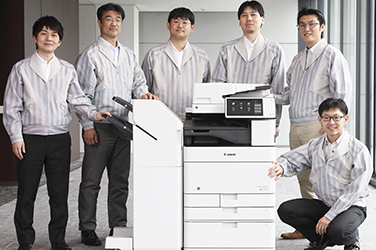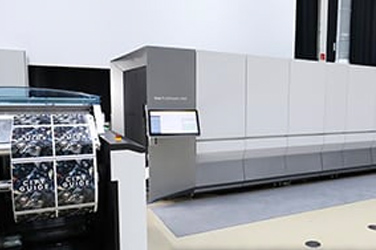
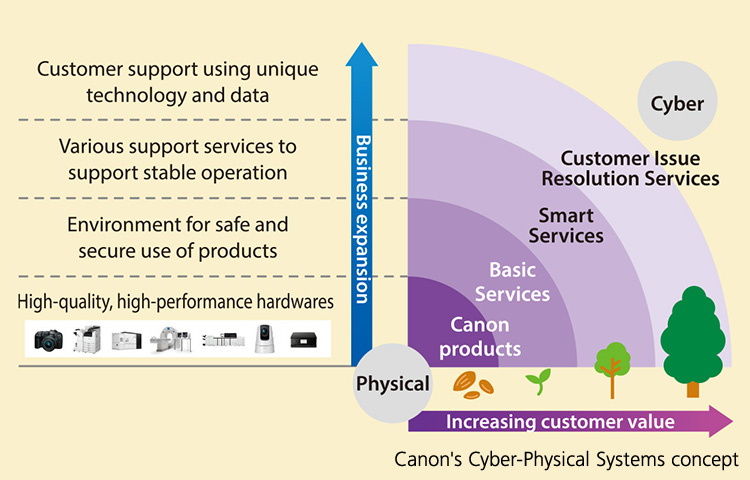
The Canon Digital Platform Technologies That Provide Our Customers with New Value
Digital Business Platform
Canon’s Digital Business Platform—which increases product value through coordination (Cyber-Physical Systems) of the cloud (cyber) with hardware products (physical)—to provide new value that anticipates customers’ expectations and demands.
October 16, 2023
Digital Business Platform That Connects Canon Products to Cyber Spaces to Provide Value
Previously, most of the added value in products was built into the hardware. However, in recent years, most products are connected to a network. The demand is for functions that will enhance the quality of the experience through combinations in of the physical and digital, such as the various functions and services that are provided using cloud and digital technologies, data analysis solutions, and so forth.
With Canon’s own products serving as the core, we are further developing the basic services that provide the environment that makes it possible to use products securely and safely in the cloud. We are also providing the smart services that support stable operation of those products. Canon deploys services for solving customer issues that provide those customers with new value. What serves as the technological infrastructure that supports these three services is our Digital Business Platform.
In other words, our Digital Business Platform is the collection of fundamental technologies that deliver value by linking the hardware (physical = products) that Canon maintains with the cloud (cyber space). We define this as Canon’s Cyber-Physical Systems. We are working to expand our lineup of products and services in ways that will make it possible for them to be safely connected to cyber space, adopt constantly running monitoring and defect prediction features, allowing them to be used with peace of mind, and being able to anticipate future expectations and demands of customers.
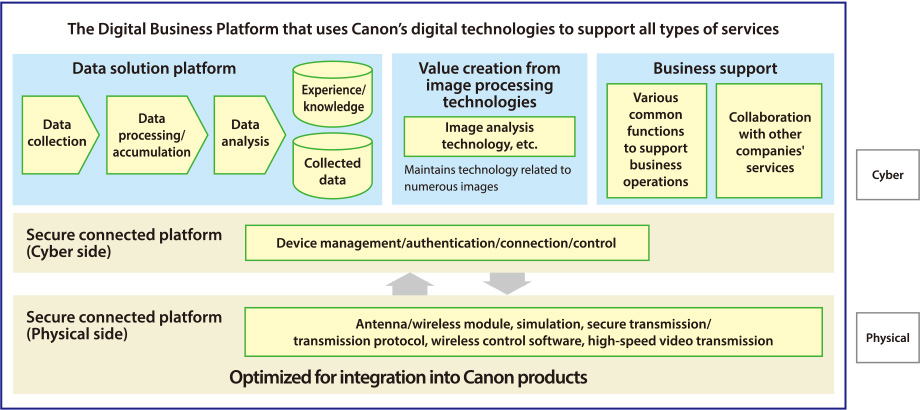
Equipping Products with Basic Services That Connect Securely, Quickly, and Stably
To maximize experience value for our customers, it is crucial that Canon’s input and output devices with their excellent video and imaging technology, be linked to cyber space and connected securely and stably. Telecommunications technologies that comply with international standards such as Wi-Fi and 5G are used to connect devices wirelessly with cyber space. For that reason, Canon takes an active part in planning with international standards bodies for such standards as Wi-Fi and 5G, and focuses on grasping those specifications at an early stage in the standardization process. With these international standards providing the base, we develop technologies for transmitting data at high speeds, simply, stably, and securely, depending on how they are being used and the data involved. This work includes, for example, the development of communication control technologies that upload large volumes of high-quality images to the cloud at high speeds and boosting device security through the use of secure chips.
The hardware and software for telecommunications such as antennas and wireless modules are developed internally at Canon so they can be used in products across all of Canon’s businesses, including printers and cameras.
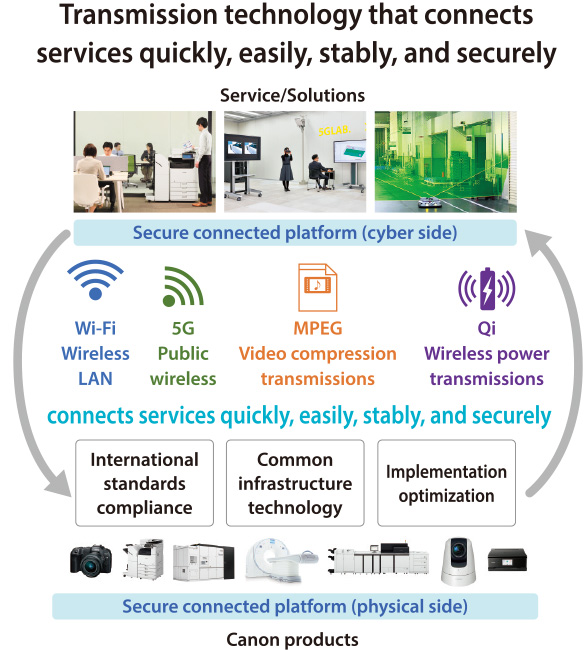
Making Use of Technology Infrastructure to Support the Shift towards Hybrid Work
Canon is offering the uniFLOW Online cloud service for companies to extend print management and scanning functions of office multifunction devices. By using an employee ID card, etc., uniFLOW Online can authorize print jobs and collect statistics on usage such as who is printing what document. It is also possible to save documents to the cloud and get them out on a printer located close to the person who needs it. Over the course of the COVID-19 pandemic, hybrid work patterns that combine work from home with coming to the office became widespread, with demands to have at home the same sort of productivity and convenience that are available at the office. At the same time, concerns over information security and the difficulty of managing printing results when working from home have become issues. Canon has made further advances to uniFLOW Online to launch a service we call Hybrid Work Print Standard that will also support consumer-oriented printers found in the home. With Hybrid Work Print Standard , it is possible to collect such data as the number of pages printed and file names. Companies can use this solution to reduce the risk of information leaks and calculate the expenses that come with doing work-related printing at home. This makes it possible for the application framework to be changed at will so companies can respond flexibly to the needs of the times.
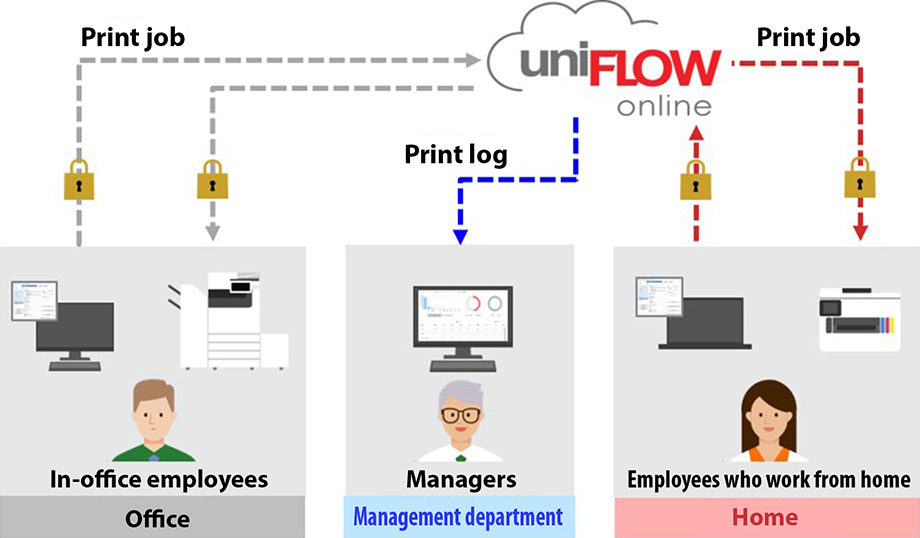
Hybrid Work Print Standard to guarantee security even on home printers
Making Major Advances in the Use of Data to Contribute to Improving Value to the Customers
Canon is making significant progress in the use of data to improve customer value. In the printing field, we can not only automatically have toner sent based on the remaining toner information of our networked office multifunction devices use, but also collect and analyze data on how much a variety of consumable products such as the drum have been consumed. We provide a service to systematically replace parts by detecting the life of the parts based on the usage status. Furthermore, we can collect information from the sensors in the various parts a product is equipped with and, by comparing this with a product’s operational status, detect signs leading to breakdowns. By making it possible to minimize downtime due to the maintenance before breakdowns and so forth, this initiative will be expanded to include more proactive maintenance services and lead that the customer can use their products with peace of mind.
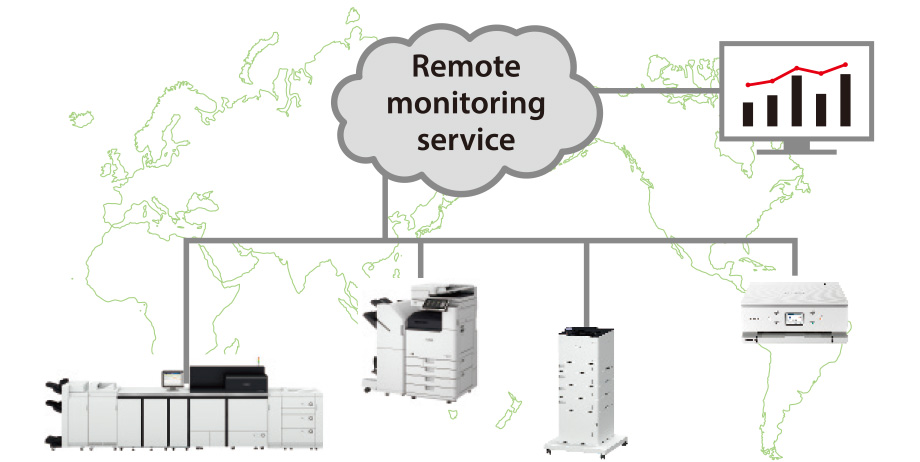
Online support service to monitor the status of the customer's printer
Furthermore, Canon also provides a service called Lithography Plus, which provides support for our semiconductor lithography equipment. It analyzes the vast amounts of operational data that Canon’s lithography equipment around the world generate so it can optimize equipment operating at customers’ facilities. On the other hand, the “anomaly detection” function —which observes data in real-time to detect abnormalities and signs of potential trouble during production—it prevents malfunctions in semiconductor lithography equipment that generally operate throughout the year and realizes superior operating rates for those devices.
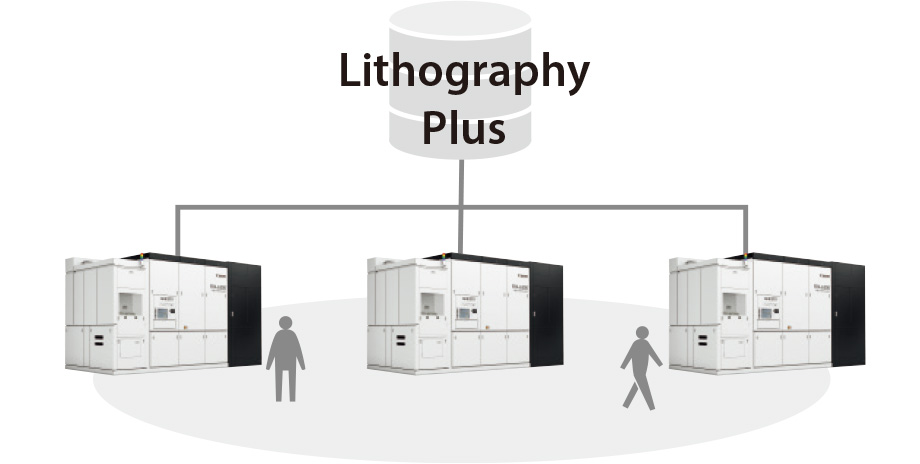
Lithography Plus detects equipment problems and their warning signs
In the medical field, Canon Medical Systems' Remote Diagnostic System (InnerVision) constantly monitors the status of customers' CT and other equipment, and even when a problem occurs, it remotely analyzes the status of the equipment and provides support, thereby resolving problems in a timely reasonable manner.
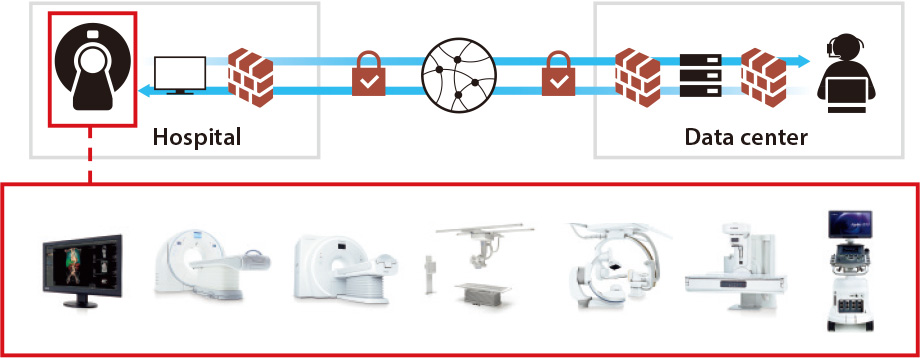
Remote Diagnostic System monitors the status of equipment
Still further, this is also useful for research on functional reviews of the products themselves. In releasing new products that incorporate our technologies and know-how, we also need to analyze how the functions and operating modes that tend to grow ever-more complex are actually being used. By streamlining functions and re-examining the user interface, the collected data can go back into developing the products that customers truly want.
We are working to push farther with the use of such data so we can deliver new value to our customers.


